How To Harvest Kale Without Killing The Plant [What to Avoid!] 2023
Interested in learning how to harvest kale without killing the plant? Superfood kale is a mainstay in the diets of fitness experts and health enthusiasts because of its abundance of nutrients.
Like other vegetables, kale is simple to cultivate, but there are specific times and techniques for harvesting it. Using these suggestions, your kale harvest will be copious all season long.
Imagine not needing to reseed your garden each week to have fresh kale available. Continue reading to learn how to harvest kale without killing the plant.
At a glance, we will be looking at:
- How To Harvest Kale Without Killing The Plant?
- Types of Kale Plants
- When To Harvest Kale?
- How Many Times Can You Harvest Kale?
- How To Harvest Kale Without Killing The Plant?
- How Often Should I Water Kale?
- Is Kale Still Good After It Flowers?

Affiliate Link Disclosure
Some of the links here are affiliate links, and I may earn if you click on them, AT NO EXTRA cost to you. I hope you find the information here useful! Thanks.
Related Posts
- How To Harvest Broccoli The RIGHT Way!
- Best Vegetables To Grow In Raised Beds: 11 Delicious Crops!
- How To Harvest Parsley Without Killing The Plant -Exact Steps! [2023]
- How To Harvest Sage Without Killing The Plant & What To Avoid! [2023]
How To Harvest Kale Without Killing The Plant
1. Do not touch the central leaves on the kale plant.
Removing the terminal bud will kill the plant. Only harvest the outer leaves first. The kale plant still needs at least 60% of its leaves to continually gather energy from the sun to keep growing.
2. Here’s how to cut kale from the garden, you can cut off leaves where the leaf stem meets the plant’s main branch.
I recommend using a precise cutter for your kale harvest.
Alternatively, you can snap leaves off at the stem by pushing down with your thumb and pulling away from the plant in a gentle motion.
Important Tip: Ensure that you DO NOT CUT OFF THE STEM. This guarantees you can continue to harvest kale without killing the plant.
3. Always pick leaves one by one, and ensure you leave the central bud alone so it can produce more leaves for the next harvest.
The central bud can be found in the center of the kale, this is where the kale produces its leaves.
4. Lastly, remove any discolored leaves upon harvest to promote the development of fresh leaves. It is recommended to do this at least a week before new leaves start growing.
5. Remember to protect your kale from the weather to keep producing a harvest. It is recommended to put mulch over the soil when temperatures rise above 80°F.
What the mulch does is that it will help keep the soil constantly moist even though the temperature has risen above average kale surviving temperature.
Extra Tip: Ensure you cover the kale plants with row covers when the ground starts chilling and frosty.
These row covers will indefinitely protect the kale leaves from the chilly frost burns that can destroy the entire kale plant.
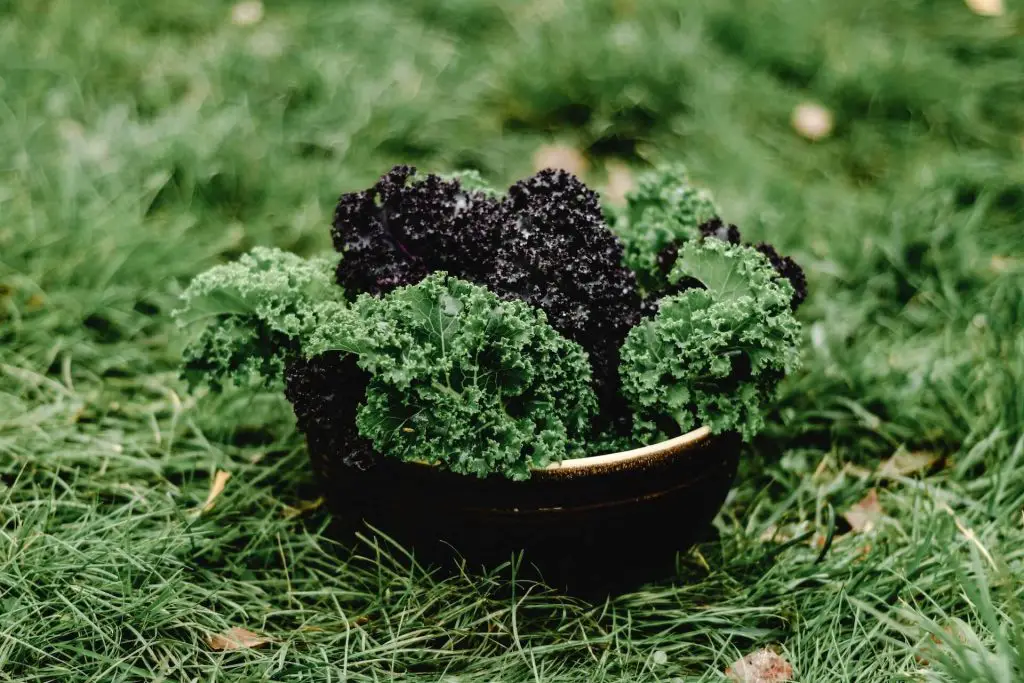
Types Of Kale
1. Common Curly Kale
Curly kale is the most common type at the grocery store and is famously known as a ‘superfood.’ It is dark green in color and sometimes has a purple tint. It can tolerate cold weather as long as it receives adequate sunlight.
Curly kale is packed with vitamins K, C, and B6, all needed for eye health and a robust immune system. It is a vegetable that is low in calories, high in fiber (great for digestion!) and has zero fat (good news for health enthusiasts).
So if you suffer from chronic inflammation, kale can help alleviate some of the symptoms. In some cases, consuming kale can improve asthma.
It usually tastes slightly bitter in foods and is very versatile in the kitchen. To get the most out of your curly kale, it is best paired with a healthy fat such as olive oil or avocado, as it helps improve the absorption of the nutrients from kale.
2. Lacinato (Dinosaur) Kale
Lacinato kale, also known as dinosaur kale, is commonly used in Italian cuisine. In Italy it is called either Tuscan kale or cavolo nero.
Lacinato kale has large, blue-green leaves that measure two to three inches wide and are a bit crispy! It tastes sweeter than regular kale and less bitter. However, it is also packed with healthy nutrients.
This kale harvest is considered one of the heartiest types of kale for cooking. If you’re not a ‘kale person,’ this kale is most likely your go-to substitute. Lacinato kale is relatively easy to prepare as both the branches and leaves can be eaten.
And the best part is that it can be eaten raw or cooked, whichever you decide. However, you must always wash it thoroughly so that the bitterness is removed before consuming it.
Lacinato can survive in hot, dry environments, so it might be a good choice for those in southern or southern states.
3. Chinese Kale
Chinese Kale looks the most different out of all the types of kale. As the name suggests, it originated in China. It looks almost identical to western broccoli, hence why it is sometimes referred to as Chinese broccoli too.
It’s similar to the make-up of broccoli or spinach but with flat, longer leaves. Chinese kale tastes sweeter than your regular broccoli. It is also rich in vitamins A, C, and calcium.
The two most common varieties of Chinese kale are the ones with the white flowers and yellow flowers. However, the kale that produces white flowers is the most popular and can grow up to 19 inches tall.
The stalks can be cut and cooked in the same way that broccoli stems are. It tastes quite similar to broccoli, so you could use it as a substitute for fresh broccoli if you run out.
When To Harvest Kale?
When kale is ready to harvest, approximately 60 days after planting the seeds. A healthy kale plant should have more than ten leaves with smaller leaves in the middle and larger leaves surrounding the outside.
Remember that harvesting is usually once in the later stages of spring or early summer. The next harvest will be scheduled in autumn when it gets cooler and frosty.
If you’re curious about what baby kale tastes like, it tastes like spinach. But unlike spinach, it has a mildly pungent flavor but is still yummy to eat! So, feel free to use baby kale in cooking, as you would use baby spinach if you want to go beyond salad.
However, if you’re looking to grow baby kale, it will be ready to pick in no less than 25 to 30 days after they are sown. In late spring or early summer, there is a first harvest time, and then there is a second harvest period in the fall.
There is no ideal time to choose this green, it is important to remember that.
Tip: Grow more kale plants! Here’s how to harvest kale seeds to expand your kale army. When the seed pods (siliques) turn a light brown, they are ready to harvest. Here’s how to trim kale: You cut whole plants and dry them for 1–2 weeks in the field
Also remember that when harvesting kale, if the leaves are the size of your hand, they are ready to be picked.
If you want to make kale smoothies, check out this 13 Best Kale Smoothies For Weight Loss You Have To Try!
How Many Times Can You Harvest Kale?
As many times as you want! It is essential to regularly harvest your kale, as leaving the leaves to die on the plant will discourage continued growth. After the first batch of kale has been harvested, wait 5–7 days to reap the new harvest.
That is how you pick kale so it grows back. Once you’ve harvested the kale, it can make various dishes such as smoothies, curries, salads, and other vegetable dishes.
How Often Should I Water Kale?
Giving kale 1 to 1.5 inches of water each week will help it develop quickly by keeping the soil moist. You may maximize your kale harvest by giving plants continuous-release plant food regularly.
To maintain its vitality, the kale plant needs regular irrigation. As a result, ensure to water your kale plants frequently to maintain evenly moist soil that isn’t saturated, so the plant drowns.
Verify that your kale plant is thriving in a cool climate as well. The kale leaves remain particularly delicious and crunchy because of the damp soil. Without these extra precautions, it could become extremely difficult and bitter.
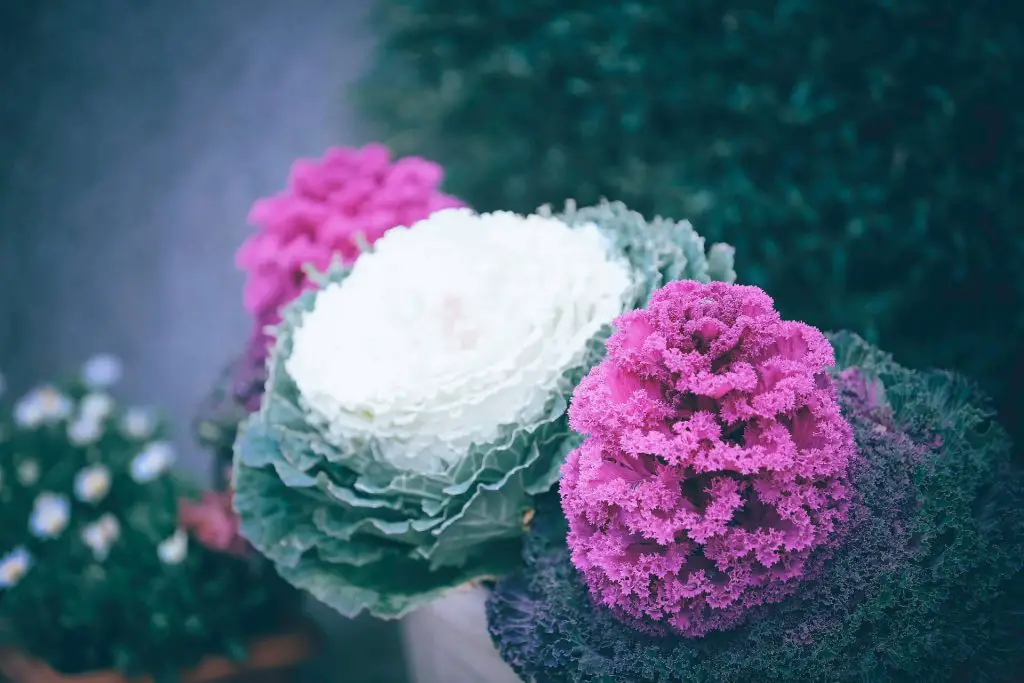
Is Kale Still Good After It Flowers?
Yes. These tiny flowers that grow on your kale plant are called florets. They look like unopened flower heads on a mature kale plant. They appear when kale starts bolting at the first heat wave in late spring to early summer.
Florets can be eaten too! Most of the time, they can taste bitter, but it is pretty sweet if you’ve had frost. Your kale plant is still good after the plant grows florets, which is a sign that your kale plant is beginning to produce seeds again.
There are many types of kale florets; below a just a few examples:
1. The Pigeon Series
It is an ornamental kale and similarly resembles cabbage. The pigeon series are round in shape with wavy outer leaves that are either medium green or dark green with a flower center that can change color. They usually are a bright pink or red color.
2. Osaka
Osaka, not to be confused with the city in Japan, are another type of ornamental kale or cabbage that are either pink, white or red. They are usually seen with smooth leaves and tightly packed rosettes.
This plant produces layers and layers of wavy green leaves. The florets are typically bright purple, pink, or cream color. A non-fussy vegetable! If you put it in a container, they usually stand up on their own.
3. Peacock Series
The peacock series is one of the biggest in the group. Not the animal, decorative kale instead. Their leaves resemble feathers, and some of their centers are red. They are capable of surviving in subfreezing conditions for the entire winter.
Therefore, you don’t need to be concerned about it dying during the colder months.
FAQs On How To Harvest Kale Without Killing The Plant
How Do You Pick Kale So That It Keeps Growing?
If you’re wondering how you can pick kale so that it keeps growing, you should cut the stems above the growth point of the kale plant. Understanding when to pick kale is pertinent to its regrowth.
Avoid choosing the terminal bud, which helps maintain the plant’s productivity and helps if you have the right tools.
Does Kale Grow Back After Cutting?
Does kale grow back after cutting? Yes, it does. When kale is harvested properly, it works as a cut and come again vegetable that quickly grows back to regenerate its leaves for multiple harvest.
All you have to do is focus on harvesting the outer kale leaves, not the inner ones.
Can You Continually Harvest Kale?
Thinking if you can continually harvest kale over and over again? Yes, you can continually harvest kale! If your plant is kept healthy and you avoid damaging the central bud, you can gather new greens every one to two weeks.
Generally, there is no limit on how many times you can harvest kale.
What’s The Best Way To Harvest Kale?
Wondering what is the best way to harvest kale? The best way to harvest kale is to grasp the stem of a mature outer leaf at the base of the main stalk and pull down and out, away from the center, until it breaks. Repeat until you have enough leaves.
Tip: Use gardening gloves to ensure your grip isn’t too tight.
Kale is an excellent vegetable, and as long as you follow these tips on how to harvest kale without killing the plant, you’ll enjoy its bountiful harvest. Just remember that kale is a long-lived, low-maintenance crop, hardy, and not prone to diseases.
You can then pull or use a leaf stripper to remove the mature kale leaves whenever you want to cook with fresh greens. Or use the baby greens to create a delicious fresh salad on the fly.
Don’t forget homemade kale chips! There are a gazillion kale meal recipes out there for you to explore
Top Tip: Preserving kale harvest is easy. All you have to do is put your kale harvest into a bag and freeze it. Freezing helps to lock in the nutrients and keep it fresh for longer.
Save this article on how to harvest kale without killing the plant for the future.
Related posts
- What Not To Plant With Kale: An Easy Guide 2023
- How To Harvest Cilantro Without Killing The Plant?[The Best Way!]
- How To Harvest Rosemary Without Killing The Plant? [Personal Experience!]
- How To Harvest Oregano Without Killing The Plant? [Personal Experience!]
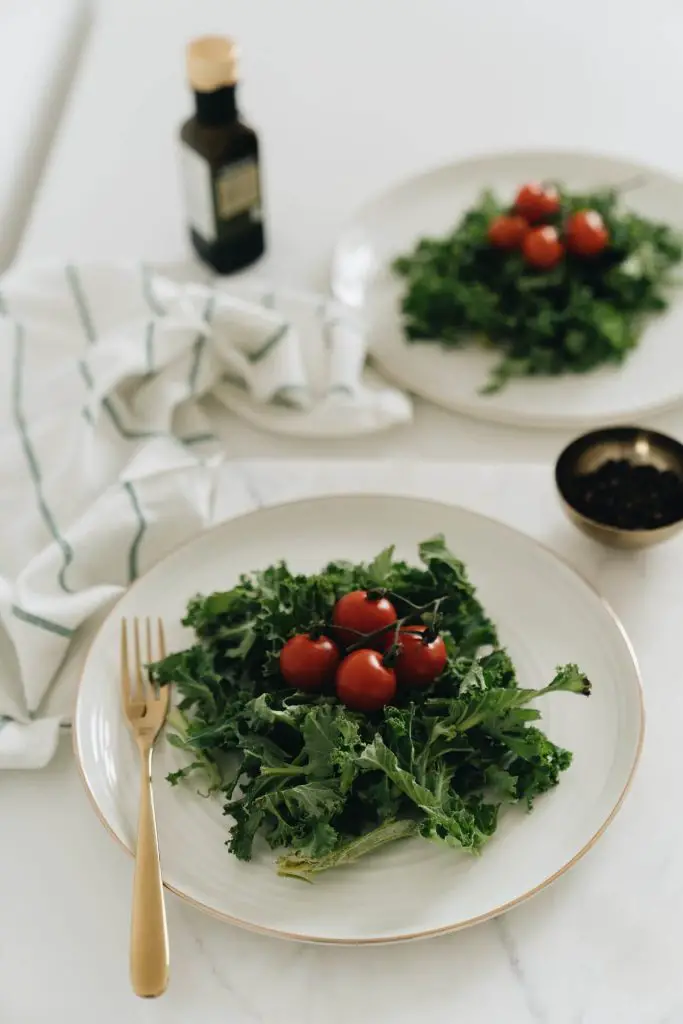






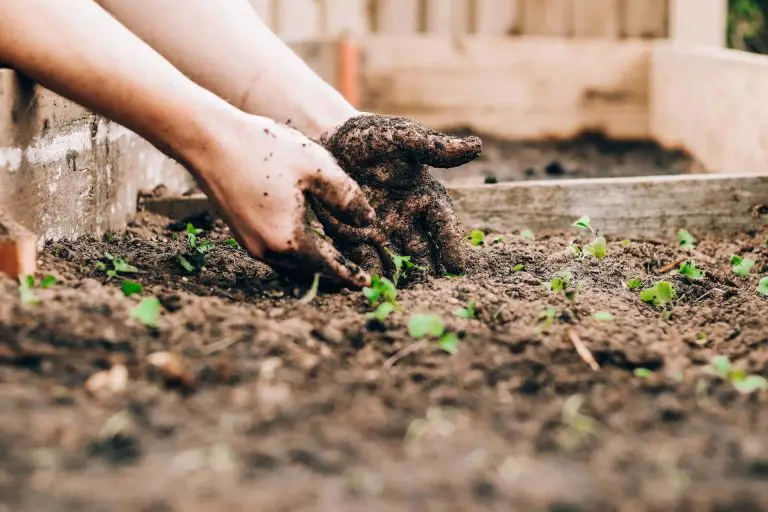
![13 Companion Plants For Bok Choy-Best & Worst![2023]](https://aboveandbeyondgardening.com/wp-content/uploads/2022/10/Companion-Plant-For-Bok-Choy-8-768x511.jpg)
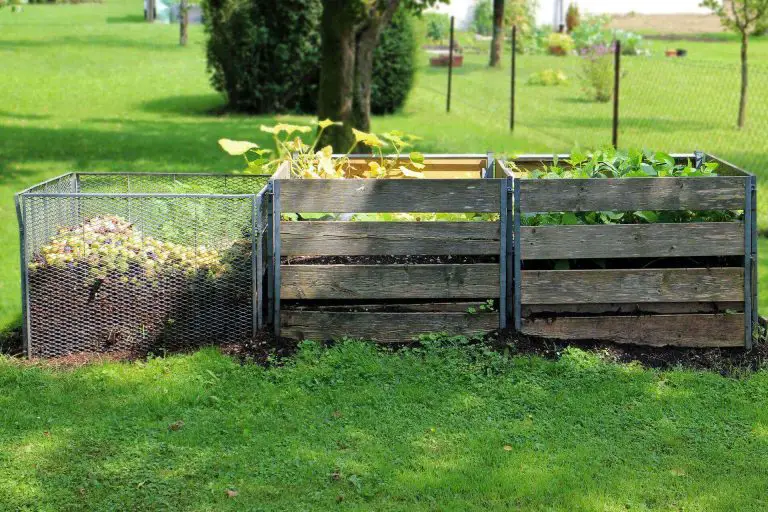
![How To Pick Mint Leaves Without Killing Plant -Exact Steps! [2023]](https://aboveandbeyondgardening.com/wp-content/uploads/2022/10/how-to-pick-mint-leaves-without-killing-plant-768x512.jpg)
![Best Time To Spray Weed Killer [2022 Guide]](https://aboveandbeyondgardening.com/wp-content/uploads/2021/10/best-time-to-spray-weed-killer-768x512.jpg)
